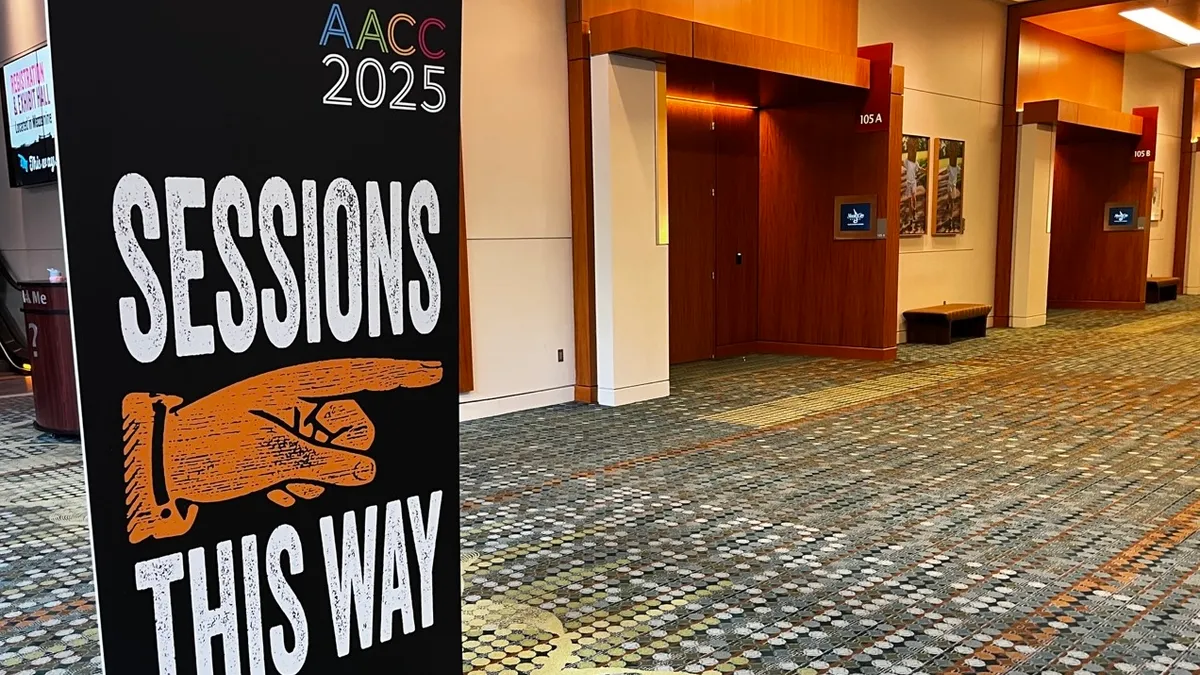When Allison Cleveland-Roberts sought to make sure graduates at the University of South Florida were adequately prepared for today's job market, she turned to an old resource, with a twist: help wanted ads.
Using data aggregated from actual job listings, Cleveland-Roberts was able to present faculty in the 22 mostly liberal arts-based departments she oversees with a list of the skills graduates needed to thrive in a variety of jobs.
"Some were baffled at the gaps they found," said the associate dean for academics in the College of Arts and Sciences at the 50,000-student research university based in Tampa. Among the 65 programs and 600 faculty within those 22 departments, they found a wide range of how professors accepted the advice and set out to make necessary changes. "Some hated it," she said, "but they still got the point."
Cleveland-Roberts' exercise is a stark example of a trend on more campuses today: Overlaying a skills map — which details the knowledge or abilities an individual needs to successfully handle a job — on top of the requirements for a traditional college degree. This exercise not only ensures the curriculum prepares students for the workplace, but it also sends a signal to employers that graduates can handle various jobs.
"We're at another turning point," said Andrea Backman, chief employability officer at Strategic Education. "Education is turning on its head to be skills based." The Virginia-based educational services company serves adult learners through a handful of education programs, including Strayer University, a for-profit online college.
Several trends are combining to push the skill-based movement at traditional schools, experts said. Employers are less inclined to train workers because recent graduates are seen as more likely to change jobs. And with U.S. student debt sitting at $1.6 trillion, students and their families are pushing colleges to give them something more than a degree in an often-broad major to prove their job qualifications. Schools, meanwhile, see this as a way to distinguish themselves from competitors and attract more students.
Some may be inclined to view this as another nail in the liberal arts coffin. But sources interviewed for this story said the exercise of skills mapping does not intend to eradicate the liberal arts but rather help colleges explain its value at a time when they are increasingly being asked to do so.
'No universal language'
Today's jobs are changing fast, with more than 40% of job requirements different from a decade ago, said Matthew Sigelman, CEO of labor market analytics firm Burning Glass Technologies. That, coupled with Generation Z's reputation for having a transient view of employer relationships, he said, makes it "hard for companies to get a compelling return on investment" for on-the-job training. Today, he added, companies "need employees to come with the right set of skills from day one."
On the student side, mapping skills "helps connect the dots" between a degree and what jobs a graduate is qualified for, said Kathleen deLaski, founder and president of the nonprofit Education Design Lab.
While community colleges and online programs such as Western Governors University have used skills mapping for years, four-year schools are increasingly interested in meeting this demand, said Sheila Martin, vice president of economic development and community engagement for the Association of Public and Land-grant Universities. "There's an acceptance (of the practice) to make sure students are set up for a good career," she said.
The challenge for schools is twofold: identify which skills are already present in existing curricula and change courses as needed to address missing information.

Even if the troika of employer-school-student agrees on the need to list skills, coming up with a system through which everyone is speaking about them in the same way can be onerous.
"The problem is, there's no universal language for communicating these skills," said Marni Baker Stein, provost and chief academic officer at Western Governors University. The many different definitions of skills and competencies can cause frustration all around, she added.
The challenge for schools is twofold: identify which skills are already present in existing curricula and change courses as needed to address missing information.
"It's a massive undertaking," said Strategic Education's Backman, adding that colleges and instructors need to comb through every lesson and assignment deliberately to accurately plot the skills present in their classes.
One important consideration is how quickly needed skills can change. Prowess in areas such as teamwork, communication and conflict management are "evergreen," Backman said, but technology skills can change every six months.
It's likely employers are more willing to train workers for these abilities, which Burning Glass's Sigelman called "last-mile skills."
Schools that haven't yet done skills mapping are encouraged to start small, said Amber Garrison Duncan, strategy director at the Lumina Foundation. "Pick a program, take what you learn and start implementing it in other places," she said.
New life for the liberal arts
Cleveland-Roberts' U of South Florida example can guide schools no matter where they are in the skills mapping process.
In her case, an urgent demand from the provost kicked plans into high gear. For at least a year prior, she had been discussing with her professors how their classes prepared students for careers and the workforce. But the directive to complete a wholesale curriculum review inside of four months pushed her to work faster. In response, she created a template professors could use to review their classes; it is based on a specific set of high-impact educational practices along with competencies for career readiness developed by the National Association of Colleges and Employers.
When faculty protested, saying that doing so wasn't their job, Cleveland-Roberts pushed back. "You do this every day," she told them. "You're just not explicit with students that you have these goals." Using data from help wanted ads helped blunt the criticism. "These are job ads; there's no bias here," she added.
In one example, the university's geosciences department learned that while the ability to create maps was a critical skill for graduates working in the field, most couldn't complete this task. They traced the problem to a lack of trigonometry acumen and then realized a typical student hadn't studied the subject in years. Reviewing course content helped close that gap, she said.
Even in fields that aren't always associated with specific careers, such as women's and gender studies and religious studies, professors saw the benefit of skills mapping, she said. For instance, women's and gender studies majors learn skills that can make them good project managers. Armed with this knowledge, the department tweaked its program to offer training on software used in that field and encouraged students to seek out such jobs.
The religion department went a step further when its staff realized their students had many of the critical thinking and communication skills valued by employers. "They didn't know how to talk to employers about what their students knew," but understanding the skill set and the need sparked professors to reach out to companies to talk up their students, Cleveland-Roberts said.
A new way to show value
One apparent outcome of this work is the validation of liberal arts degrees, which could be particularly important for the field with fewer students earning these degrees in recent years.
This work can shed new light on the value of degrees in fields such as English, philosophy and history, sources interviewed for this story said. Critical thinking and intercultural competencies are some of the enduring skills that are the most coveted, Western Governors' Baker Stein said. Skills mapping "gives liberal arts a way to communicate the value of a degree," she added.
Cleveland-Roberts said the lessons learned at U of South Florida went beyond instruction; the university realized how much professional development was needed to keep staff up to date on career-specific technologies.
While the ride has been bumpy and implementation remains a mixed bag, Cleveland-Roberts said she sees a new confidence in her staff. "They always thought they were doing a good job," she said. "Now they know."
Still, she added, faculty are "in various places along this journey, in terms of their level of sophistication in dealing with implicit and explicit goals."




















